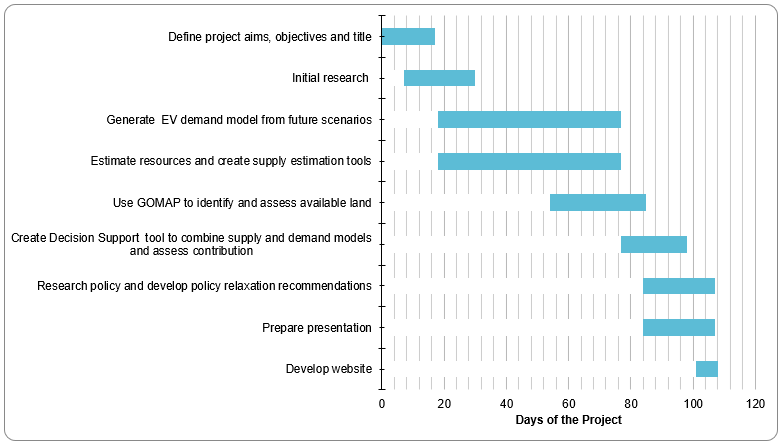Overview
Context
This project aims to explore the possibility of using clean urban energy in order to meet the rising electricity demand attributed to increasing numbers of electric vehicles (EVs). The Scottish Government is pushing forward targets to reduce the number of petrol and diesel vehicles on the road, culminating in a ban on the sale of cars with combustion engines past the year 2032. (Glasgow City Council, n.d.)
For the introduction of EVs to contribute towards a decarbonised society, the electricity that is used to charge them must be generated from clean energy resources. The sustainable generation of this electricity will require drastic changes to infrastructure, technology and the way we use land. These issues are even more prevalent within cities given the number of additional constraints, with the identification of available land being especially difficult. For the purpose of this project we aim to identify suitable areas of land within city confines that can be used for the deployment of clean energy technologies. The electricity generated from these sources will be used to meet this rising EV electricity demand; assessing different levels of penetration depending upon scenarios generated.
As such, this project is not aiming to complete a supply-demand matching analysis. It instead consists of a quantitative evaluation of renewable energy generation based upon land availability to power electric vehicles. It is assumed that back up technologies such as battery storage, cooperative smart switching, and time-of-use tariffs are available if this project were to be implemented to assist with supply-demand matching.
For this project we considered the following questions:
Project Management
It was decided early in the project that a degree of project management would be necessary in keeping work on track and on schedule. At the first group meeting, project & management requirements were agreed upon. It was decided that a rotation of project manager every 2 weeks would not only be fair in giving each group member a chance to experience a management role, but also to cycle in fresh ideas and keep work on schedule.
A project charter was created for the 2nd crit session, once the project definition had been fleshed out. This set out initial project purpose, deliverables, risks and prevention measures. Download the project charter here.
A Gantt chart was created for the 2nd crit session to show the intended time-scale of various aspects of the project. This was revised again at the project planning meeting held at the midpoint of the project.

A project planning meeting was held in week 6, at the midpoint of the project. The meeting aimed to re-organise the team structure and roles, and refocus on tasks for the remaining part of the project. Download the project planning meeting here.

